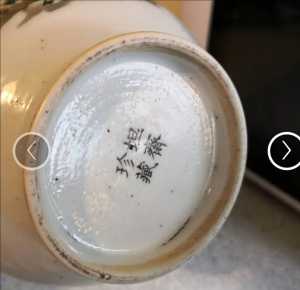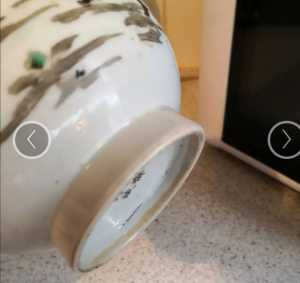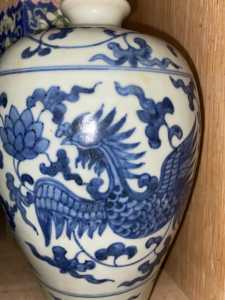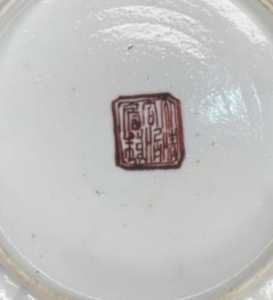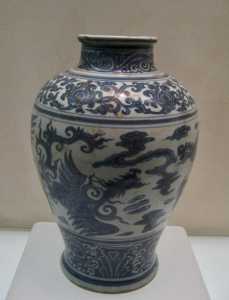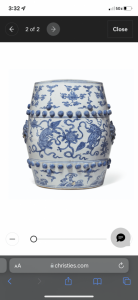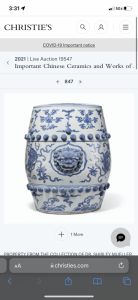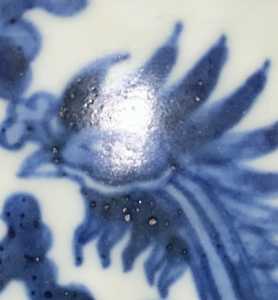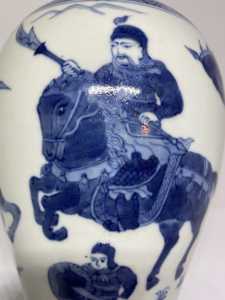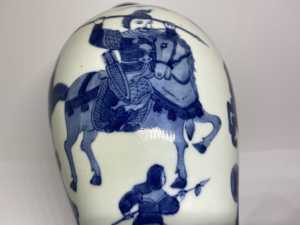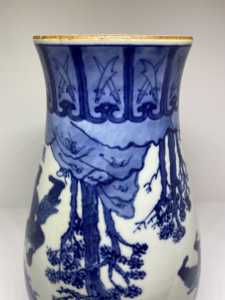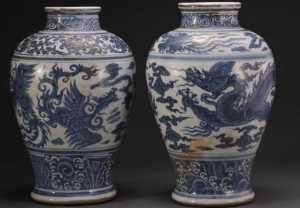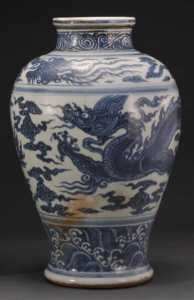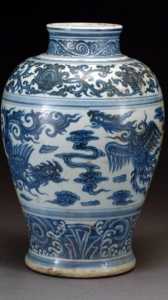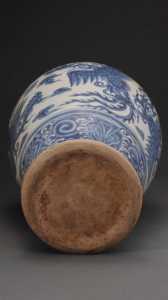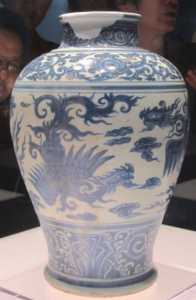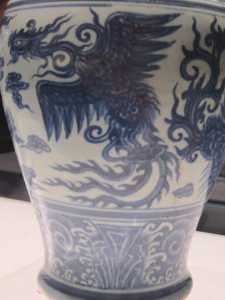The Chinese and Asian Art Forum. For Fans, Collectors and Dealers.
 Basic Rules For the BidAmount Asian Art Forum: Talk about whatever you want. You can even discuss and offer things that are for sale if they are authentic. Maximum image file size per post is 2 MB. Images of 700pxl x 700pxl are optimal if saved at a medium resolution. Be respectful of others and enjoy yourself. Click the YouTube link for a brief tutorial on using the forum. You can also EMBED Videos by cutting and pasting from You-Tube, Vimeo etc.
Basic Rules For the BidAmount Asian Art Forum: Talk about whatever you want. You can even discuss and offer things that are for sale if they are authentic. Maximum image file size per post is 2 MB. Images of 700pxl x 700pxl are optimal if saved at a medium resolution. Be respectful of others and enjoy yourself. Click the YouTube link for a brief tutorial on using the forum. You can also EMBED Videos by cutting and pasting from You-Tube, Vimeo etc.
NOTE: To post an item or add a new post, click open the category title from the FORUM LIST, and CLICK the Blue ADD TOPIC button.
I have been seeing these coming into the market by cargo containers full. They are all copies. This dragon is their favorite go to.
Mark is right, the bottom of the first vase just doesn’t look ok.
As to the second vase: I have never seen a fault like this. Would a faker intentionally produce it? What I don’t like about the vase is the dirty looking glaze above the upper double rim. It is usually a sign of a fake.
Birgit
Hi Bob -
Concur with Bitgit, Julia and Mark …
The Yongzheng marked dragon/phoenix temple vase is certainly not of the period, painting style, execution of the motifs and individual elements within such are far to stiff/placed and stereotyped, also the cobalt/glaze tones, trimming/finishing of the footrim/base and mark writing are all wrong - this has little age …
Unfortunately the same applies to Xuande marked meiping vase - which is vary far from early Ming, late Ming or Qing copies of such - again this has little age …
How/where did you acquire these two pieces …?!
Stuart
I learned recently that a Phoenix is a good tool for dating. Its not the only tool all expects of the vase must be looked at but the Phoenix head is a good tool. For some reason they are painted differently for most periods. A Phoenix with a long straight beak is not a good sign.
@imperialfinegems Mark your Yongzheng vase bottom has a rough crude look I hope I’m saying it right. But a bumpy look. I have seen this on many wares form many dynasties. It’s actually a look that I seek out for my personal collection it just has a authentic look. But I don’t see it on high value items which I’m trying to understand why some look this way and some don’t. It’s something modern forgery can’t duplicate. Like this plate much later has that texture.
Here is a vase in a museum in China of a Xuande period phoenix vase. Also a Xuande period garden stool from Christie’s.
@somewhereintexas this is an opinion I disagree with. Everything can be faked and has been. Your going to have to learn about the flow it takes awhile but it comes you will understand when you see it this piece is missing that the flow.
@somewhereintexas we need to see a piece in its entirety. Not one aspect tells everything. I’m not expert in Ming wares just experienced in a few things. I can tell a really bad one but a really good one could go both ways. Pictures only give us limited information. We need top and bottom edges angles etc it helps. If you believe you have authentic pieces I would strongly suggest getting expert opinion Peter charges $12 worth the opinion.
Hi Bob -
The phoenix meiping you cite above was recovered from a princely tomb, alone with another decorated with a five-clawed dragon - images attached. Both pieces now held in the Hebei Provincial Museum, and were exhibited most recently at Shanghai in 2019 as part of there ‘Lustre Revealed’ - Jingdezhen Porcelain Wares in Mid 15th Century China’ - last two images. They are now attributed to Zhengtong, so 1436-1449, and not Xuande period ...
Such vase were commissioned as burial objects placed within the tomb to accompany the decease in the after life so, although decorated with Imperial type dragons/phoenixes, they are not Imperial quality and would not have been presented at court ...
Look closely at the way the phoenixes are drawn, full of life and movement. Note the tails elementals, both totally different to each other, which are seen/used on early Ming Imperial wares to depict the Feng (male) and Huang (female) phoenixes ...
The drawing on this meiping bares absolutely no resemblance, in anyway, to those on your vase ...
A correction also:- Quality control at the Imperial kilns was exceptionally rigorous throughout the early/mid Ming. Any piece that failed, for whatever reason, was immediately smashed/buried within the Imperial kiln site and would not, in any circumstance, have been ‘sold to the people’ ...
In the late Ming, rejected, misfired and lesser quality items were not destroyed/buried but stored at the Factory depot in Jingdezhen. This practice continued in the early Qing, and it was only after Tang Ying assumed duty as resident Manger in the 6th year of Yongzheng (1728) that the rejects were sent, along with good examples, to be given away as bestowal gifts by the Emperor or sold in the capital. Then in 1742, the Qianlong Emperor issued an edict ordering Tang Ying to sell the rejects locally and not to send such wares to the Capital ...
Stuart
Thanks for visiting "The BidAmount Asian Art Forum | Chinese Art"
If you sell on eBay, or have a shop feel free to post images and descriptions and links.
Check back often for discussion about the latest news in the Chinese art and antique world. Also find out about the latest Asian art auctions at Sotheby's, Christie's, Bonhams and Tajans.
Auction results for: fine porcelain, ceramics, bronze, jade, textiles and scholar's objects. As well as Japanese, Thai, Vietnamese and other Asian cultures.
Thank you,
Peter Combs
Topics and categories on The BidAmount Asian Art Forum | Chinese Art
Kangxi vases, Kangxi dishes and chargers, Kangxi ritual pieces, Kangxi scholar's objects, Qianlong famille rose, Qianlong enamels, Qianlong period paintings, Qianlong Emporer's court, Fine porcelain of the Yongzheng period. Chinese imperial art, Ming porcelain including Jiajing, Wanli, Xuande, Chenghua as well as Ming jades and bronzes.
The BidAmount Asian Art Forum | Chinese Art
A free Asian art discussion board and Asian art message board for dealers and collectors of art and antiques from China, Japan, Korea, Thailand, Cambodia, Vietnam and the rest of Asia. Linked to all of the BidAmount Asian art reference areas, with videos from plcombs Asian Art and Bidamount on YouTube. Sign up also for the weekly BidAmount newsletter and catalogs of active eBay listing of Chinese porcelain, bronze, jades, robes, and paintings.
The art of calligraphy - and for the ancient Chinese it certainly was an art - aimed to demonstrate superior control and skill using brush and ink. Calligraphy established itself as one of the major Chinese art forms during the Han dynasty (206 BCE - 220 CE), and for two millennia after, all educated men were expected to be proficient at it.
The Museum’s collections of Asian art span nearly five millennia and encompass the cultures of China, the Himalayas, India, Japan, Korea, and Southeast Asia. In 2007, the Museum launched an initiative to create dedicated galleries for the collection, beginning with a gallery for the arts of Korea ...
Chinese art is full of symbolism, in that artists typically seek to depict some aspect of a totality of which they are intuitively aware.
China Online Museum is the finest online museum of Chinese art. It features Chinese calligraphy, painting, ceramics, bronzes, carving, and other artworks.
Chinese Ceramics & Works of Art. Overview Upcoming auctions Contacts Auction results ... Christie’s sales of Chinese ceramics and works of art showcase centuries of Chinese history. Held throughout the year in London, New York, Paris and Hong Kong, they attract a wide audience of collectors and connoisseurs vying for pieces as diverse as ...
Explore Asian Art Week. Contact the Specialist Department. Chinese Paintings ... Senior Specialist, Head of Sale. [email protected]. Tel:+1 212 641 5760. Bid in-person or online for the upcoming auction:Fine Chinese Paintings on 10 September 2019 at New York. Bid in-person or online for the upcoming auction:Fine Chinese Paintings on 10 ...
Discover an abundance of must-see art from all corners of a vast continent at Christie’s NY Asian Art Week. From contemporary classical and Chinese paintings to works with exemplary provenance from the Art Institute of Chicago, our Rockefeller Paza galleries will be full of ancient treasures and contemporary masterworks in a salute to the vibrant arts of Asia.
Sold to benefit The Art Institute of Chicago’s Asian Art Acquisition Fund, the sale features 84 lots with a focus on Ming and Qing porcelains, and offers a rare insight into the taste for collecting Chinese ceramics and works of art in the Midwest from the end of the 19th century through the 1980s. Highlights include two Wanli wucai garlic-head vases, a Qianlong mark and period, blue and ...
Specialist, Chinese Paintings, Christie's London Dr Malcolm McNeill is a Specialist in Chinese Paintings at Christie’s, based in London. He previously worked as an assistant curator of the Chinese collections and the Victoria and Albert Museum in London, as a researcher at the British Museum, and as a translator and tour guide at the National Palace Museum in Taipei.
The Christie's Education 2020 Conference: The Chinese Art Market 18 Jun 2019 Christie’s Education is delighted to announce our first international academic conference in Asia which will take place in Hong Kong from 26-27 November 2020 at the Hong Kong Convention and Exhibition Centre and will run in parallel with Christie’s Hong Kong Autumn Auctions.
The summer Chinese Art sale in Hong Kong will feature works of art from several private collections, including Qing porcelains and textile from the collection of the legendary Chinese art dealer A. W. Bahr (1877–1959), fine gilt bronze Buddhist sculptures from an old Hong Kong collection, an East Asian collection of Qing dynasty wine cups and jades, and a Japanese collection of Song ceramics ...
Sotheby's Chinese Works of Art Department holds two auctions each year in London, New York, Hong Kong and Paris.
Chinese Art - View Auction details, bid, buy and collect the various artworks at Sothebys Art Auction House.
With more than 340 Chinese works of art dating from the Neolithic to the Republic periods, highlights of this sale include a selection of Qing Imperial monochromes from the collection of Arnold and Blema Steinberg, early ceramics from the Art Institute of Chicago and Chinese porcelain and works of art from the collection of Henry Arnhold.
Results: Sotheby's Asia Week achieved $52.4 million in six strong auctions, exceeding pre-sale estimates. With 76.5% of lots sold and 60.3% of lots surpassing high estimates, the Asian art sales at Sotheby's indicate continued collector interest in the finest works of art from China, India and and the Himalayas.
Today's sale of Important Chinese Art will proceed as planned with sessions at 10 AM and 2 PM EDT. Sotheby's will be monitoring the weather conditions throughout the day and will be available to coordinate alternative bidding options should conditions make it difficult for clients to attend the auction in person.
Bonhams Chinese Art department is renowned for offering the finest works of art representing the richness and breadth of China's artistic heritage, particularly Imperial porcelain, white and spinach green jades, cloisonné and Buddhist art. Specialised international auctions are held globally, including London, Hong Kong and San Francisco.
Bonhams : Chinese Works of Art We use cookies to remember choices you make on functionality and personal features to enhance your experience to our site. By continuing to use our site you consent to the use of cookies. Please refer to our privacy and cookie policies for more information.
Bonhams Fine Art Auctioneers & Valuers: auctioneers of art, pictures, collectables and motor cars. We use cookies to remember choices you make on functionality and personal features to enhance your experience to our site. By continuing to use our site you consent to the use of cookies. ... Chinese Art (US) General enquiries
Bonhams : Fine Chinese Art We use cookies to remember choices you make on functionality and personal features to enhance your experience to our site. By continuing to use our site you consent to the use of cookies. Please refer to our privacy and cookie policies for more information.
Bonhams Fine Art Auctioneers & Valuers: auctioneers of art, pictures, collectables and motor cars Bonhams : Asian Art We use cookies to remember choices you make on functionality and personal features to enhance your experience to our site.
Bonhams are international auctioneers of fine Chinese and Japanese art. We specialise in rare Imperial and Export Chinese ceramics and works of art, as well as Japanese ceramics, fine and decorative works of art from the Neolithic Period to the 20th century. View on map
Bonhams Fine Art Auctioneers & Valuers: auctioneers of art, pictures, collectables and motor cars. We use cookies to remember choices you make on functionality and personal features to enhance your experience to our site. By continuing to use our site you consent to the use of cookies. ... Asian Art Bonhams. Work. 22 Queen St.
